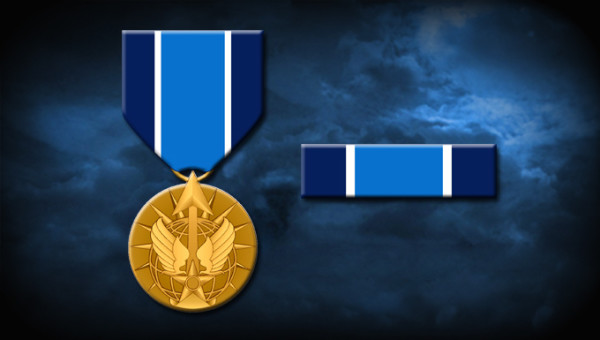

Editor’s Note: This article by Oriana Pawlyk originally appeared onMilitary.com, a leading source of news for the military and veteran community.
The U.S. Air Force says airmen serving in cyber; space; intelligence, surveillance and reconnaissance; and remotely piloted aircraft jobs may be eligible to receive the newly created Remote Combat Effects Campaign Medal if they were part of operations that had significant impact.
The service on Tuesday announced the criteria for the medal, called the RCECM, stipulating that airmen in these career fields who create or personally provide “direct combat effects from remote locations and lead to strategic outcomes or the delivery of lethal force” could be nominated to receive it, according to a news release.
The actions must have been completed on or after Sept. 11, 2001.
“These airmen play a crucial role in every campaign we undertake, and this medal is for them,” Air Force Chief of Staff Gen. David Goldfein said in the release. Then-Air Force Secretary Heather Wilson established the award earlier this year.
The medal follows the Pentagon’s award — the “R” device — for those with hands-on employment of a drone or other weapon system that directly impacts combat or military operations overseas.
The device’s criteria were announced in 2017; it is retroactive to Jan. 7, 2016, when then-Defense Secretary Ash Carter announced changes to the military decorations and awards program.
But the R device and the Remote Combat Effects Campaign Medal are not the same, explained Capt. Carrie Volpe, an Air Force spokeswoman.
“The R device is higher up on the order of precedence and is affixed to a non-combat performance award to distinguish that the award was earned for direct hands-on employment of a weapon system” that had impact, Volpe said. For example, the R device could be worn on an Air Force Commendation Medal.
The campaign medal is “a specific medal for remote impacts on a named [Defense Department] combat operation,” she said. The operations that qualify include Enduring Freedom, Iraqi Freedom, New Dawn, Nomad Shadow, Freedom’s Sentinel, Inherent Resolve, Odyssey Lightning and Pacific Eagle-Philippines.
If an airman was in a non-deployed status but remotely participated in one of those operations, he or she could be awarded the RCECM, Volpe said. In some cases, airmen in other fields may be considered for the medal.
An airman cannot have been physically exposed to hostile actions or at risk of exposure to hostile action to receive the medal, the release states.
The Pentagon has grappled for years with how best to recognize airmen not physically in place for a battle or conflict. Officials previously weighed medals for drone operators and other intelligence-gathering airmen but were unable to come to a consensus.
Then-Defense Secretary Leon Panetta first introduced the remote impacts device in 2013 as the Distinguished Warfare Medal; the Pentagon ended up scrapping the idea at a time when critics viewed the award as the “Nintendo Medal.”
“Our remote operations community makes vital contributions to our national security and the security of our allies,” Goldfein said Tuesday.
This article originally appeared on Military.com
More articles from Military.com: